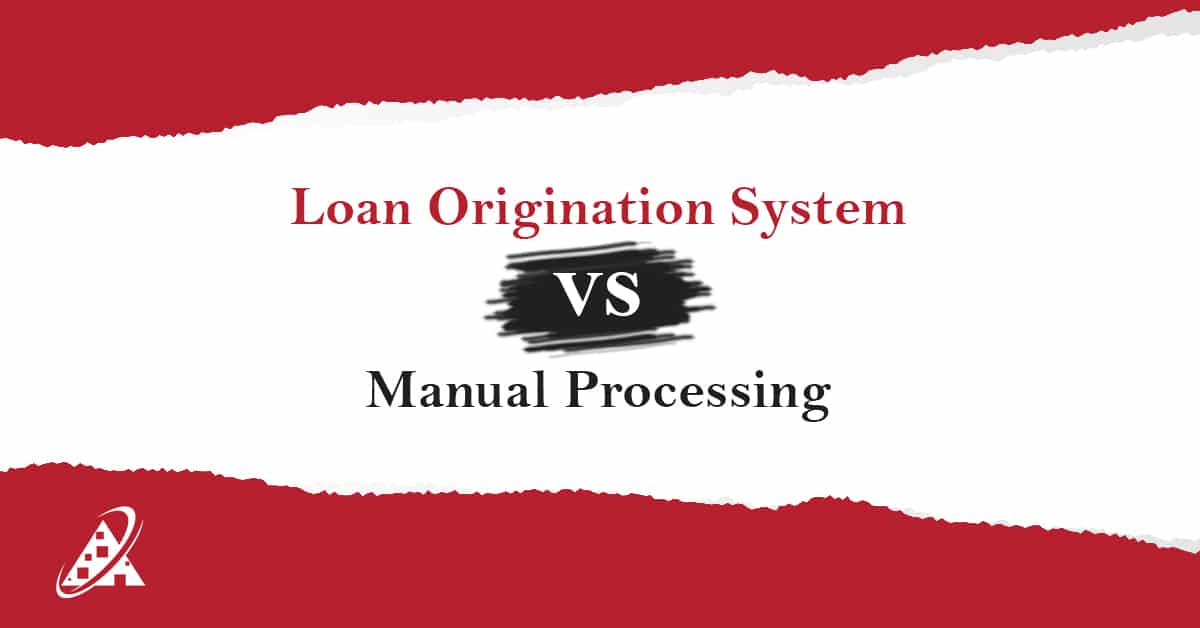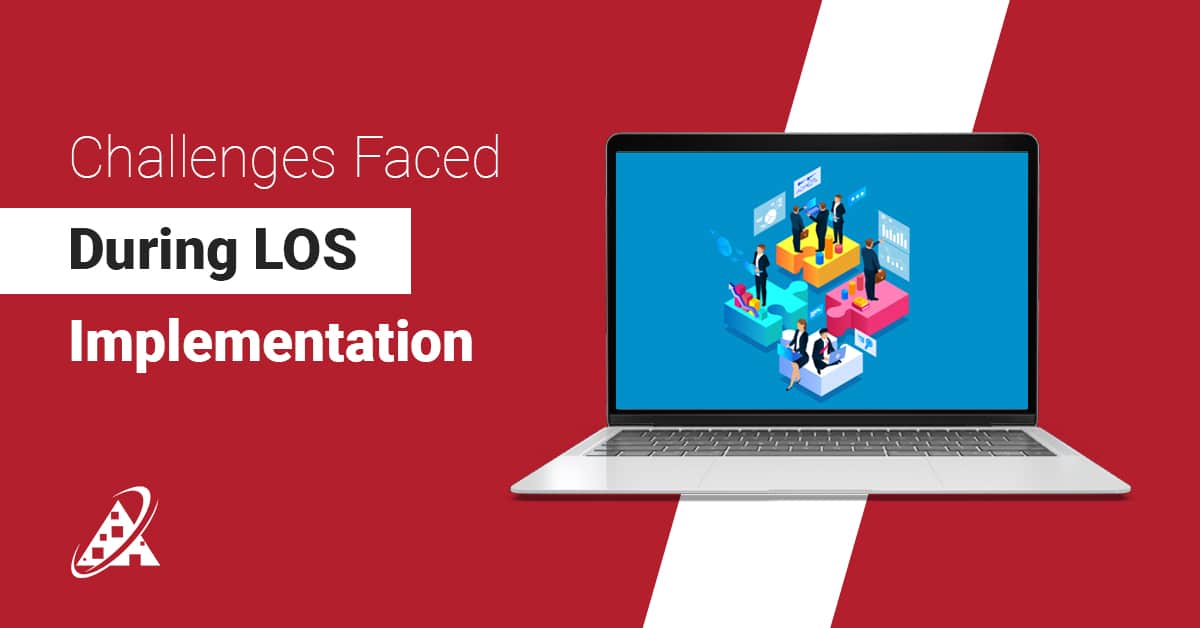Loan Origination System vs. Manual Processing
Loan origination system comparison starts from developing a basic understanding of the loan process system. A loan origination system process flow is a big help for financial institutions in simplifying the complex process of approving loans. Los integration allows automating workflows and handling document collection and approvals digitally, this then helps to reduce delays and streamline the process. Using data and a standardized set of guidelines, it also helps lenders make quick approval decisions. While loan application processing system may differ slightly depending on the type of loan and the lender so for that purpose an advanced loan processing system assures a smoother and more efficient experience for both borrowers and financial institutions.
What Is A Loan Origination System Vs Loan Management System?
There are a lot of loan origination system requirements. However, a loan origination system vs loan management system gives lenders a clear view of the entire lending process after a particular loan is approved. With the help of this loan processing system and los integration, lenders can easily track loan status, analyze complex data for valuable insights and offer borrowers the support they need to manage their payments. It also helps identify any lacking or issue or gaps in loan servicing early on, allowing lenders to address issues before they escalate into a major problem later.
The loan origination system (LOS) and loan management system (LMS) play an important role in helping lenders handle loan operations with utmost efficiency as well as reliability. In today’s market, a quick and convenient loan experience is favored in all operations, starting from the application to receiving funds. Lenders are turning to advanced technology provided by mortgage software development companies. By understanding differentiation between loan origination system and loan management system, financial institutions can now easily create a seamless and simple processing of borrowing to assist their customers with the help loan origination automation guidance. In summary, for mortgage loan origination software integration, both loan processing system are essential for smooth lending operations, and knowing their differences then allows lenders to choose the right tools for loan process optimization.
In order to process loan applications quickly and accurately, there are two primary methods that are commonly used during different loan origination system stages. First one is an advanced technology powered by artificial intelligence called Loan Origination systems (LOS) while the other requires involvement of human effort, known as Manual processing.
Do you want to apply for a loan but got questions about the right processing mechanism?
In this article, we will compare and explore the benefits and drawbacks of these two approaches for the loan process system. Keep reading below to understand the factors which make the loan journey smoother, easier, and more efficient for both lenders and borrowers.
Comparing a Loan origination System process with manual loan processing system involves assessing the advantages and disadvantages of automated technology of artificial intelligence versus traditional processes performed by a human resource in the loan origination system process flow. Below we have listed the pros and cons of each.
Loan Origination systems comparison with manual processing mechanism:
Manual Processing
Pros:
1. Cost-efficiency:
- For smaller institutions with exceptional loan origination system process, manual processing may serve as cost-effective as compared to investing in a Loan origination automation guidelines.
2. Flexibility and Adaptability:
- Manual processing allows easy benefits that helps to manage unique or non-standardized loan application processing system and situations.
- It can align according to the changes in the loan approval system easily.
3. Targeted customer service:
- Provides a personalized experience for applicants, as human interaction assures better understanding of specific needs and circumstances.
- A great advantage is the ability to connect for direct communication because it is beneficial to enhance relations between applicants.
Cons:
1. Delayed processing:
- Manual processing is typically slower and can cause delays in loan approval systems.
- Requires significant manual effort, increasing the workload for employees and occupying more of their time.
2. Higher probability of errors:
- There is a higher potential for errors due to manual data entry and calculations, which can result in mistakes in the loan processing system.
- Inconsistencies in decision-making due to human judgment and bias.
3. Compliance challenges:
- Increased risk of violations due to human involvement as the set of regulations may differ.
- Difficulty in maintaining a comprehensive and organized audit.
Loan Origination Systems (LOS)
Pros:
1. Efficiency:
- LOS integrations automates various stages of the application process, decreasing the time taken to process and approve loans.
- It has a unique feature that streamlines and improves operational efficiency and enables faster decision-making in the long.
2. LOS Integration and connectivity:
- It can integrate with various third-party platforms, such as credit bureaus and verification services, for comprehensive applicant evaluation. For example, our Address Validation Plugin for Encompass® uses UPS database to verify property addresses instantly, to ensure accuracy and expediting loan processing.
- Enhances communication and collaboration between different stakeholders involved in the loan approval systems or processes.
3. Proper consistency:
- Automated calculation and algorithms reduces the risk of human error, ensuring accurate calculations with zero loan processing errors.
- Maintains consistency in evaluating loan application processing system and correctly follows the set rules and criteria.
4. Compliance and regulations:
- Loan origination automation guidelines can be programmed to align with specific regulatory guidelines that supports to reduce potential compliance risks.
- Provides an audit trail, helping in compliance monitoring and accurate reporting.
Cons:
1. Dependency on technology:
- Too much reliance on technology can be a risk to create loan processing errors, especially if there are system failures or technical glitches.
- Requires practice and training for staff to effectively use and manage the Loan origination automation guidance.
2. High cost for maintenance:
- Initial setup costs and maintenance expenses associated with implementing a loan processing system can be high.
- Small and medium-sized institutions may find the cost high between various mortgage loan origination software comparison.
3. Customization can be difficult:
- Customizing a loan origination system process to match specific organizational needs can be complex and time-consuming.
- Less flexibility in maintaining the systems of los integration to unique business processes.
Conclusion
Loan origination software comparison is a must before selecting your option. As Loan origination system process and manual processing depends on an organization’s size, budget, need for customization, compliance requirements, and the demand for efficiency in loan processing system. The key is to balance the scope of automating with customized services so your business can effectively meet customer expectations as well as regulatory demands. Larger institutions with high loan volumes may benefit from the efficiency and accuracy of LOS integration, while small scale businesses might find manual processing more suitable due to its reliability and cost-effectiveness.
Make your mortgage better with ATI
If your organization is planning to shift from manual working to LOS or wants to upgrade the existing loan management system to a new technology, we provide premium assistance in this advanced upgrading process. Our expertise ensures easy transition, optimizing your loan application processing system capabilities for enhanced efficiency and accuracy. We have mortgage technology specialists as well as mortgage software development service at ATI who are proficient in handling various LOS platforms, including Encompass®, MeridianLink, and BytePro.











